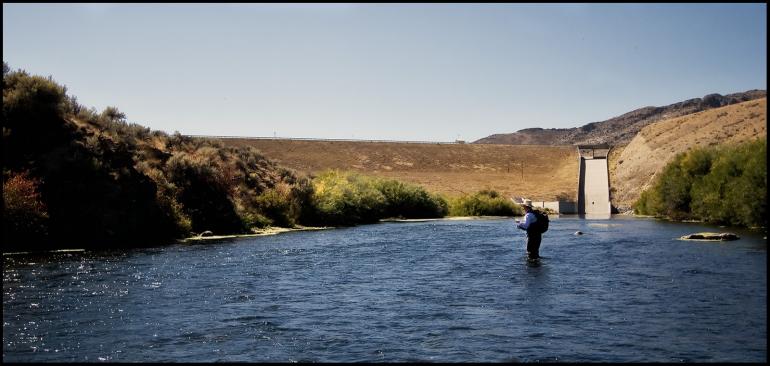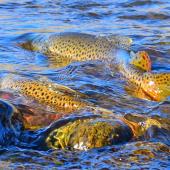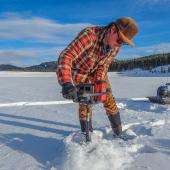Chasing Tailwater
Spring runoff. For the fly angler, this season of muddy torrents means one of three things: 1) wait it out; 2) fish still water (ponds and lakes); or 3) fish a tailwater river (controlled by a dam). Option 1 sucks, and option 2 ain’t no picnic either. Luckily, there are some excellent tailwater options within a couple hours’ drive of Bozeman: the Missouri, the Bighorn, and the Beaverhead.
On the Missouri River, the tailwaters below Hauser and Holter dams are perfect for buffering Mother Nature’s raucous spring runoff. The river below Holter has become one of the most popular rivers to fish at any time of year, but the spring offers numerous public access points, and it fishes well in waders—when flows are less than 7,500 CFS—or from a boat at any flow.
Another high-water “sure thing” is the tailwater below Yellowtail Dam on the Bighorn River. It might be in the middle of nowhere, but with a trout population up to 7,000 per mile, it’s hard to beat. With fewer walk-in options than the Missouri, the Bighorn is a favorite for floaters.
The third must-fish river for any tailwater angler is the Beaverhead below Clark Canyon Reservoir. It may look small, but it’s full of BIG trout. The river is a particularly productive tailwater with lots of spring-creek influences, making for rich aquatic bug life. Brushy banks mean tough wading conditions, so the Beav’ is another river best accessed by boat.
Each river has its own local pattern, but if you keep the following flies in your box, you’ll be well-armed for any Montana tailwater: pheasant tail, zebra midge, brassie, lightning bugs (pink and silver), scuds (pink, olive, grey), sowbugs, San Juan worms, and any nymph with a “firebead” on it (those hot orange or pink beads). Keep in mind, most of these flies are small to tiny: #16-#22.
Streamers, like your basic woolly buggers, zonkers, and sparkle minnows, are also good to throw in the spring. However, when the waters get big from larger dam releases, getting down deep with a pair of nymphs and split shot below an indicator is the way to go.
Runoff can be a painful time for any fly fisher, but the “big three” tailwaters are a fun way to get in some excellent trout fishing during the dirty-water days of late spring.











